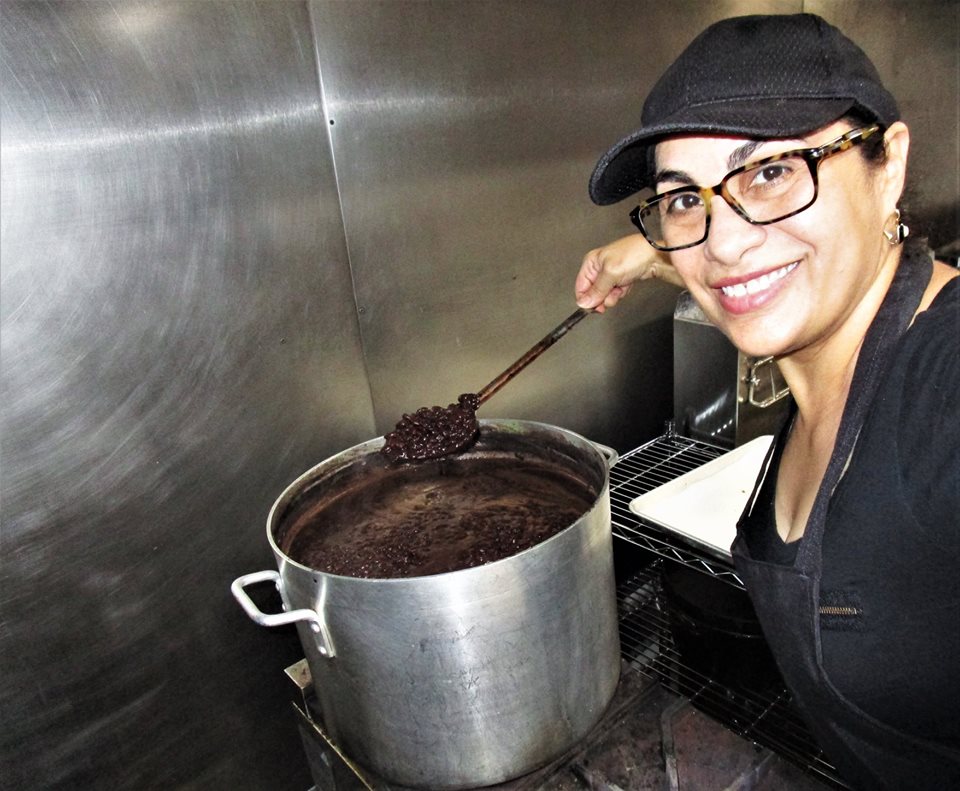
Veronica Perozo Luna opened her restaurant with the vision to keep a simple menu and one she could easily control and improve. Image via Facebook
Written by
More and more, restaurant owners are considering just how many dishes they want on their menus. It was just last year that Chili’s Grill & Bar reduced the amount of offerings by nearly 40 percent in an effort to simplify and get food out faster, according to an August article in Nation’s Restaurant News.
It was in 2014 that McDonald’s Restaurants did the same thing, saying in an article by the Associated Press it was too complicated.
“There definitely seems to be some evidence that you can have too many choices,” said Paul Price, professor of psychology at Fresno State who specializes in judgment and decision-making. “It makes it harder to make decisions for one thing, and a lot of times, people end up less satisfied with the choice that they do make.”
The major study Price references is from a book called “The Paradox of Choice — Why More is Less” by Barry Schwartz, which argues eliminating choices can reduce anxiety for customers.
“For people, there is a greater chance for regret — feeling like you made the wrong choice and second-guessing yourself,” Price said.
Instead of thinking about the food they ate, oftentimes people end up thinking about what they could have had.
Keeping a menu simple is exactly what Veronica Perozo Luna, owner and cook for La Arepa in the Tower District, aimed to do.
It was about a year ago that Luna started her restaurant serving arepas, which are like sandwiches with bread made from maize and topped with beans, meat and plantains. They originate from Venezuela.
She watched chefs on the Food Network who had a common refrain — restaurants with smaller menus do better than restaurants with large ones. She designed her menu with that in mind.
“People don’t try new things because they go to what they know is good,” Luna said.
At her quick-service restaurant, she offers eight varieties of arepas, a number of salads and plantain fries.
Researchers claim that between six and eight items seem to be the Goldilocks numbers for a menu. A study that Price cited from the Journal of Culinary Science & Technology had respondents of different demographics view different menus with varying numbers of dishes. Six to eight was the most popular range.
“For appetizers, people like to see six or eight, but they don’t really like to see 12 or 15, and they don’t like to see two or three,” Price said. “There’s kind of a sweet spot in there in terms of what people like to see in a menu.”
This is what Luna had in mind.
She designed her menu so people can go there five times and will have tried almost everything. This allows customers to find out exactly what they like, in her opinion. She compares her menu to In-N-Out, which only has variations on the same burger. She tries to do the same with her arepas, whether they are chicken, beef or vegetarian. This gives her more control over the items, allowing her to monitor what is selling and what isn’t. She can play around with recipes and come up with new items she thinks her customers will like.
Perfecting the dish is also what Raj Bisla, general manager at The Standard, a north Fresno restaurant and lounge, is trying to achieve by cutting down on the number of menu items.
Right now, he has 30 items, from salads and appetizers to sandwiches and entrees. He is trying to push more food at the bar, and he thinks he can do this by simplifying the menu and focusing on making one dish really great.
“I have two steaks, two chickens, two fish, two pastas,” Bisla said. “Let’s eliminate some of those — focus on one steak and one fish and let’s make it really great instead of doing two different things.”
Compared to a smaller restaurant that might bring people in based on their specialties, larger restaurants often have to cater to a much more diverse crowd.
“We try to understand what the guests are looking for and we have to purchase according to that,” said Greg Vartanian, owner of the Vintage Press and Southern Pacific Depot restaurants in Visalia. “We don’t just order what we want to serve, but what customers want to eat.”
While some restaurants may have dozens of items on a menu, owners who buy fresh ingredients have to consider what they can sell before it goes bad.
Restaurants can easily end up throwing away hundreds of dollars worth of food every week if they don’t sell it, Vartanian said.
“With fewer choices, you have less waste. With less waste, you can control price more,” Vartanian said.
Beyond waste, fewer menu items means needing fewer people in the kitchen.
“Menus are getting shorter because of the cost of labor going up,” Vartanian said. “We don’t have the privilege anymore of having lots and lots of people in the kitchen.”
At Vintage Press, he could have between six and 12 people in the kitchen at a time, depending on the day of the week. Paying for that amount of staff can make up 30-60 percent of expenses, whereas a few years ago, that rate would have been 20-30 percent.
The logistics of having 25 different choices is not easy on a chef, and limiting that amount also means being able to limit the number of staff that has to prepare that food.
Even though many may see more options as being better, for restaurant owners, it’s a trade off.
“I think people like choices,” Vartanian said. “But more than that, they like quality.”








